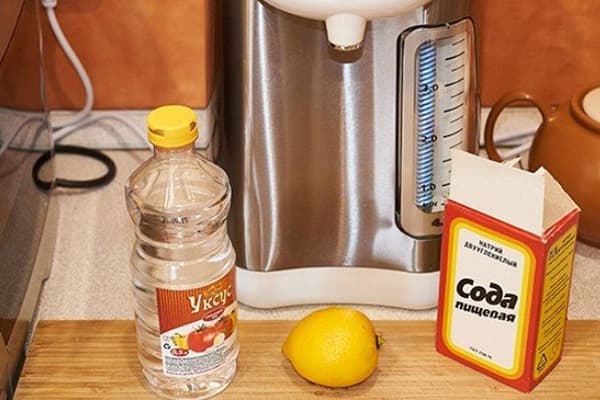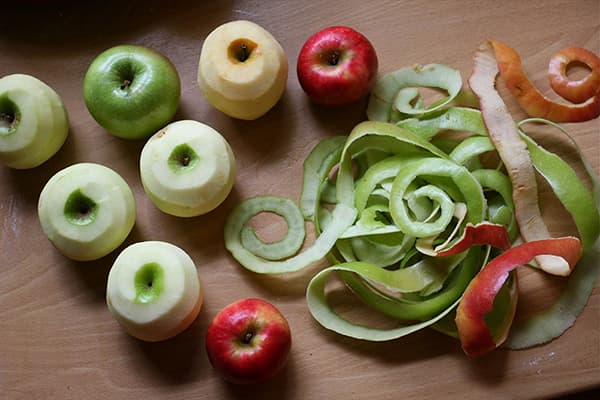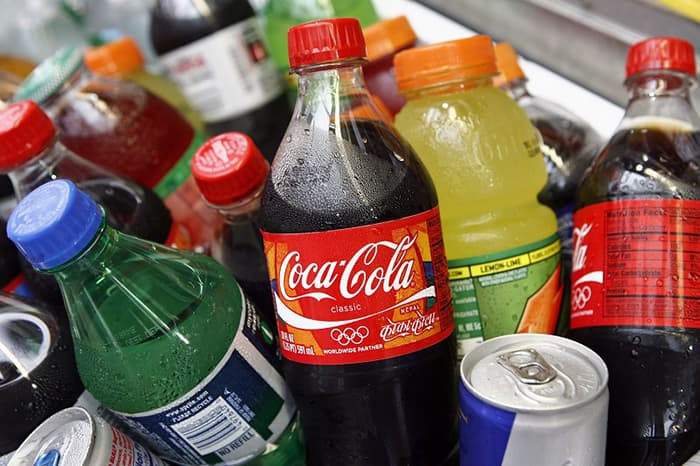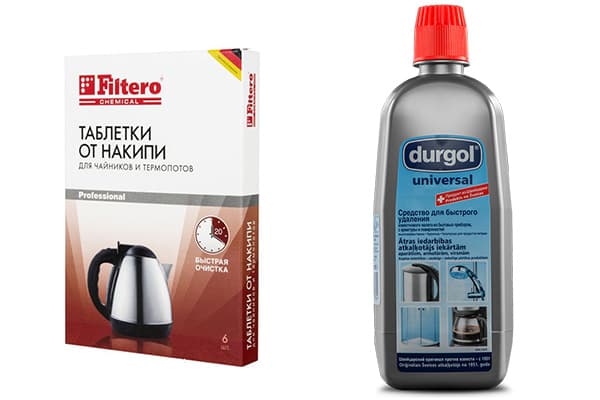Have you replaced the kettle with a thermopot? Find out how to descale it
Content:
When you start using a thermopot instead of a kettle at home or at work, the question almost immediately arises of how to descale it. To remove sediment and household contaminants, you can use ordinary home remedies - for example, citric acid, vinegar, soda, etc. However, in some cases, only special compounds can cope with the task, which must be used according to the instructions.
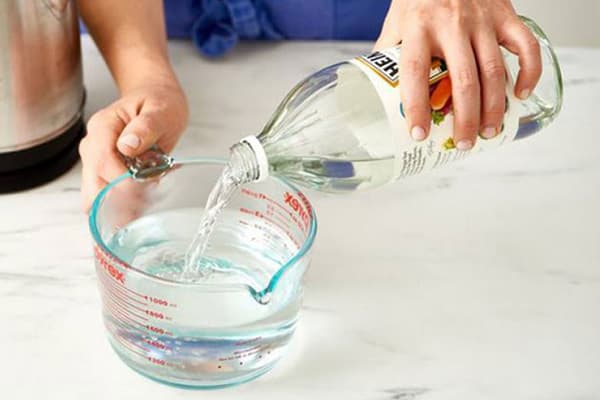
Acetic acid
At home, the thermopot is cleaned with the same means as a kettle - for example, acetic or citric acid. Since scale is mainly insoluble carbonates (mineral salts), they need to be converted into a liquid state, and this can be done with the help of acids.
Cleaning takes place according to the following algorithm:
- Water is poured into the thermopot.
- For each liter add 1-2 large tablespoons of table vinegar (concentration - 9%).
- Boil and leave to cool to room temperature.
- Drain the water, rinse the surfaces and boil the thermopot again.
For processing, you can also use vinegar essence (concentration - 70%), which should be taken 10 times less in volume (1 teaspoon for every 2 liters of water is enough).In this case, it is no longer necessary to boil, since a strong solution of essence will cope with dissolving scale even without heat treatment. But be careful when working with such concentrated acid - it can literally burn your skin!
If the farm has a lot of old brine from tomatoes, cucumbers and other winter preparations, you can use that too. Acetic acid must be present in such a brine - it is this that will clean the surface of scale. The brine is completely poured into the thermopot; if it is not enough, add a little water. Then boil and rinse the device with clean water.
Lemon acid
The instructions for descaling are exactly the same. The dosage is as follows: for every liter of water – 1 sachet of citric acid (25–30 g). You can take a larger quantity, and in this case you will not need to boil the water.
The advantage of citric acid is that it does not leave such a strong odor as vinegar, and especially concentrated essence. However, lemon is not as strong as acetic acid. Therefore, if the pollution is already very serious, its concentration needs to be increased by 1.5–2 times.
Baking soda
This remedy is used in cases where the plaque is insignificant. The instructions are:
- Water is poured into the thermopot (to the top).
- For each liter, take 1 large spoon of soda.
- The mixture is thoroughly mixed.
- Then you need to boil the solution and drain it, then rinse the thermopot.
If the scale is not completely gone the first time, you need to repeat the procedure again. Soda is not a very effective remedy; it only copes with a small layer of scale. But it does not leave any odors and, moreover, disinfects internal surfaces.
Potato and apple peels
If scale has recently formed in the thermopot, potato peelings or apple peels will also work. They need to be taken in quantities of 300–500 g, washed thoroughly, cut into small pieces and placed in a thermopot. Then it is filled with water in full and boiled, the water is cooled for 1–2 hours and the surface is washed with a sponge and a cleaning agent.
The advantage of this method is that the peel allows you to cope not only with the “classic” scale, but also with white salt deposits. Pear peels are also suitable for this purpose. The method of using it is exactly the same (can be used separately or mixed with apple peel).
Coca-Cola and other sodas
Contrary to popular belief, refreshing drinks remove scale not thanks to dissolved gas, but with the help of phosphoric acid, which is included in their composition. You can buy almost any soda containing this component:
- coca cola;
- Pepsi-Cola;
- "Sprite";
- "Fanta", etc.
They just need to be poured into a thermopot (1-2 liters) and brought to full volume with water. Additionally, you can add acetic or citric acid, then boil the solution and let it cool.
It is best to use Sprite and other uncolored drinks, since in this case the surface is guaranteed to remain perfectly clean.
Professional descalers
If the plaque is too strong and the described recipes do not help, you can use professional products that remove dirt well:
- "Antinakipin"
- Durgol universal,
- TASSIMO,
- Topperr,
- Filtero,
- Techpoint and others
They must be used according to the instructions. For example, take Antiscale powder, fill the thermopot with water, then add 1 sachet for every 2 liters.Boil for 15–20 minutes, turn off, cool for an hour and wash off.
5 precautions when cleaning a thermopot
The cleaning procedure itself is quite simple, but even in this case certain precautions must be taken:
- Warn all your loved ones in advance so that they do not mistakenly pour water from the device.
- Avoid the use of non-food acids - hydrochloric, sulfuric, nitric, etc.
- Rinse the container thoroughly after each treatment - at least 2 times.
- Do not use abrasive products, including sandpaper, steel wool, etc.
- Handle vinegar carefully, do not allow the essence solution to boil, so that the pungent odor does not spread throughout the house.
How to prevent scale formation
It will not be possible to completely avoid scale formation, but the rate of its occurrence can be significantly reduced if:
- Clean the thermostat at least once every 2 months.
- Always empty any remaining water from the container.
- Always rinse the device before adding water again.
- Use filtered water instead of tap water.
- Periodically inspect the walls of the thermopot under a bright lamp and, if necessary, remove scale immediately after it appears.
Thus, you can remove plaque from a thermopot using the same methods as in the case of a kettle. However, you need to monitor this device especially carefully. The volume of the thermopot is significantly larger, so it needs to be cleaned more often.
